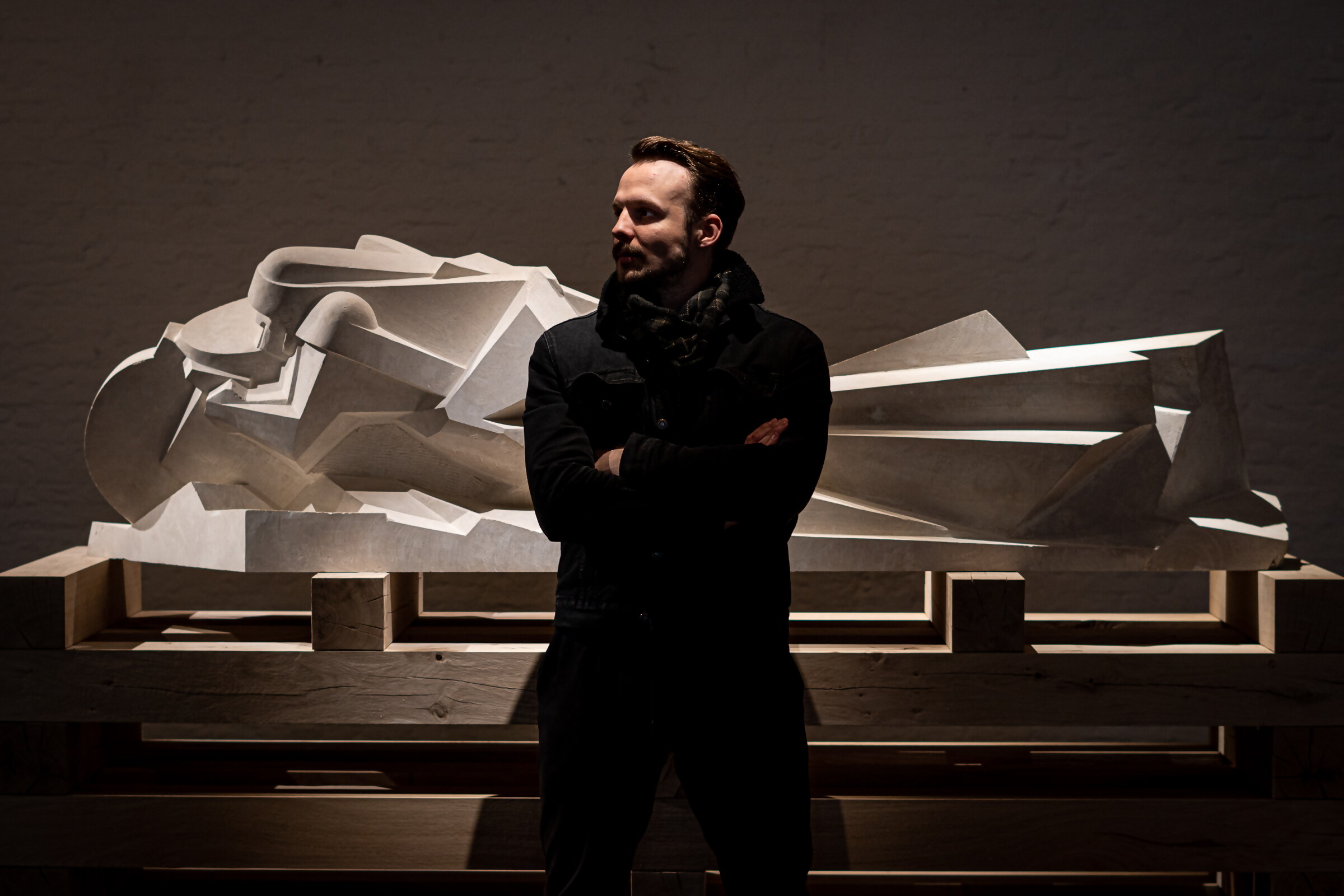
“I was the young guy who wanted to work with stone, I wanted to work with metal, I wanted to be very hands-on and shape materials. But we were discouraged from the outset and told that these are old ideas. We don’t do this anymore. We find objects, we cut them in half, and we build a narrative. We’re narrative builders and conceptual artists. We don’t have to make visual work. That’s old-fashioned. That’s old hat.”
As he describes it, this stringent limitation on Fen de Villier’s art schooling was ‘dream-crushing’. He’d enrolled at Glasgow School of Art, a prestigious academy, to turbocharge his lifelong yearning and transform himself into a sculptor. Being under the auspices of such a great institution, tutored by the cream of art teachers nationwide, he’d probably be furnishing Goliath-sized statues for his parents’ and brothers’ presents that Christmas. Instead, the Labyrinthine concrete walls of anti-traditional higher education blocked him.
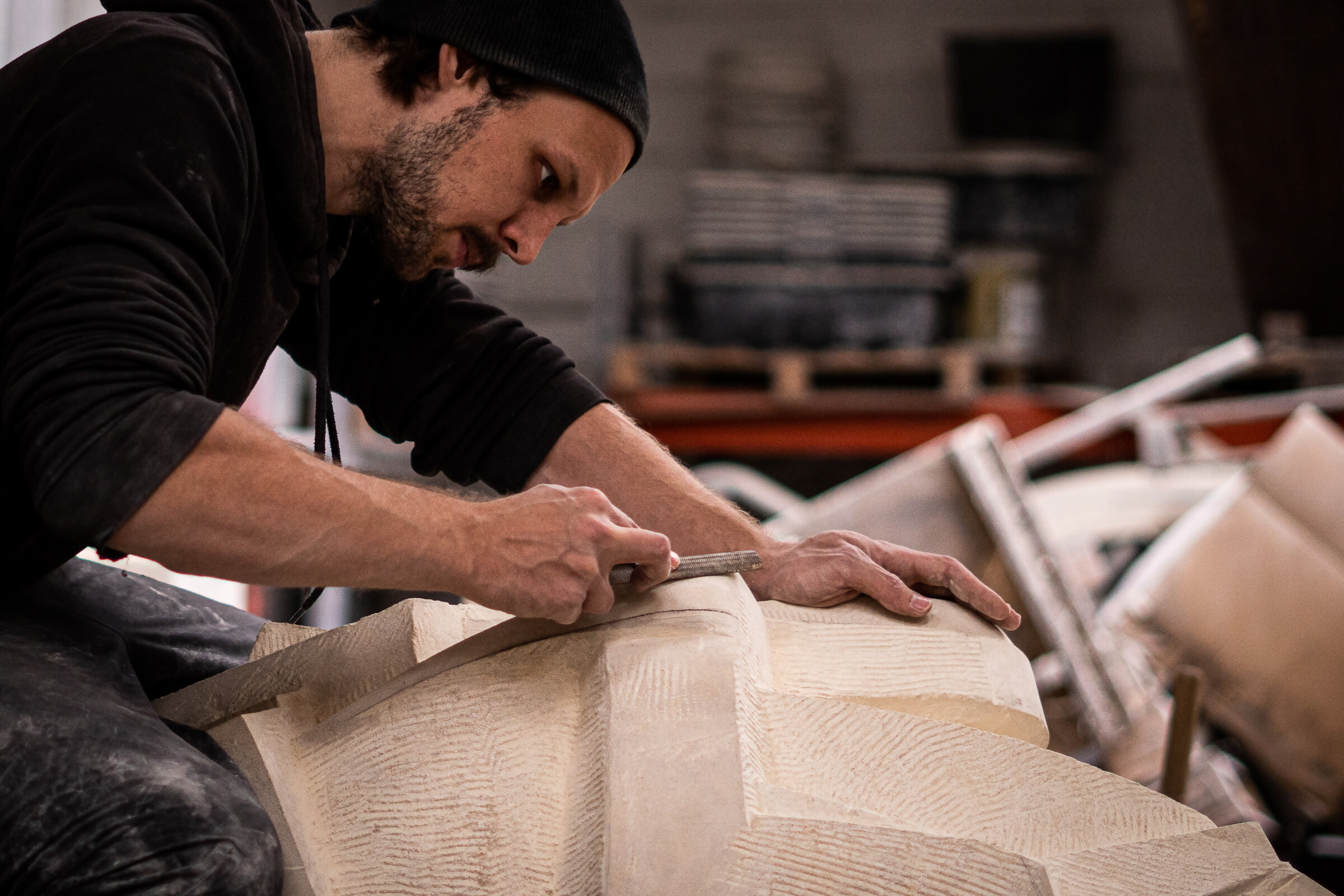
Fen refining details on the “Momentum” stone sculpture
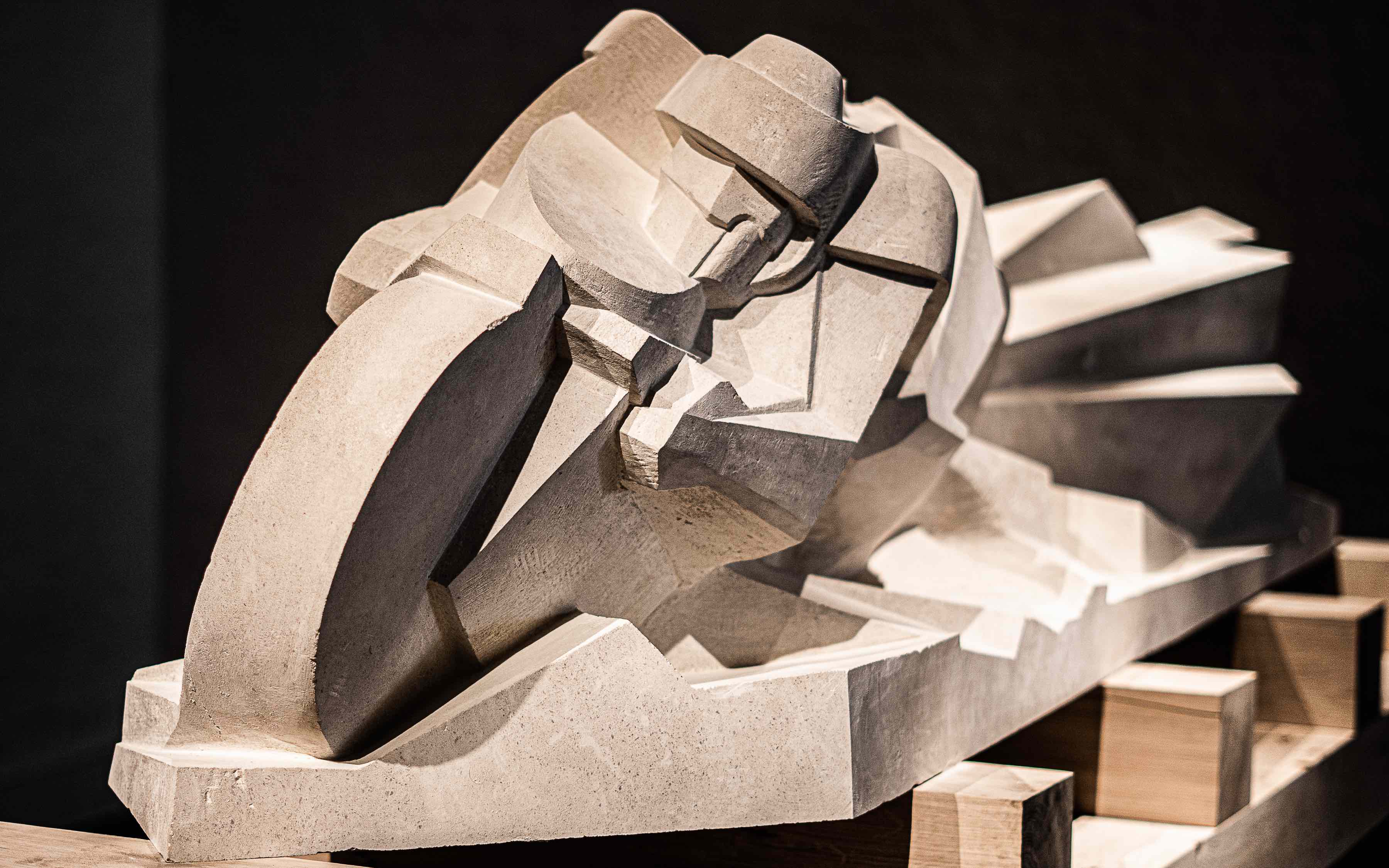
“Momentum” from the front, from Portuguese Limestone, 240cm long
‘It’s a really horrible position to be in,’ Fen recollects to me, ‘You have this creative fire in you, you’ve got this vision, but there’s no tutor who wants to nurture or feed that. Instead they want to discourage you and shoot down your dreams.’ Every tutor Fen looked to for encouragement and instruction told him his ideas were wildly outdated. Being a sculptor in the way he’d grown up thinking it entailed, staring hungrily at an enormous stone slab with a hammer and chisel in hand, was now being called into question. Did he not want to be ‘ahead of time’, ‘pushing forward’, or ‘conceptual’? Did he not want to ‘build a narrative’?
‘I didn’t know what to do,’ Fen grimly recalls, ‘Thankfully, there were family friends who suggested I switch to the Royal Academy of Fine Arts in Antwerp. The Belgians still teach sculpture and give you the foundational basis with which you can imagine and dream. Once you have the dreams, you can build them.’
I was asked recently "What energy do you see this next major artistic movement embodying?"
With fire in my eyes, I said "Think of a tank rolling forward at high speed smashing through everything in its path. THAT is the energy we need" pic.twitter.com/3GRbXmRdil
— Fen de Villiers (@FendeVilliers) September 5, 2022
Things kept getting better. Fen excelled, won awards, and deepened his understanding of art history. Antwerp was breathing life into the sculptor. In his third and fourth years, he became more interested in Early Modernism, Vitalism and in ‘showing strength and dominance visually and aesthetically.’
But things started to change. Similar sounds Fen heard in Glasgow were echoed over the North Sea to him in Antwerp. He began to meet barriers once again. ‘Things were going well, and I was enjoying what was happening on the course, but I was intrigued by the drip, drip, drip… of ideology.
‘I don’t mind some ideology behind certain people. They’re free to do as they please. I started to realise a very feminist doctrine was creeping in. It was very concerning for me at the time because I was a young guy and wanted to express power. I was thrilled by the early 1870s and 1920s Modernists who made these giant, grand sculptures.’
Fen’s tutors started probing him. Was he sure he wanted to make this? Was he aware of how his sculptures were beginning to appear? They were becoming ‘dominant’. Some tutors said Fen’s work had started to ‘take up space’. Others noted that his work was ‘colonial’. ‘It was very, very, very strange,’ Fen stresses, ‘You started to have these words tacked onto you because you were connecting to the virile energy of the early modernists. I wasn’t even linking to it in a particularly brilliant way! It was just the beginning of becoming slightly inspired by what they were doing over a hundred years ago.’
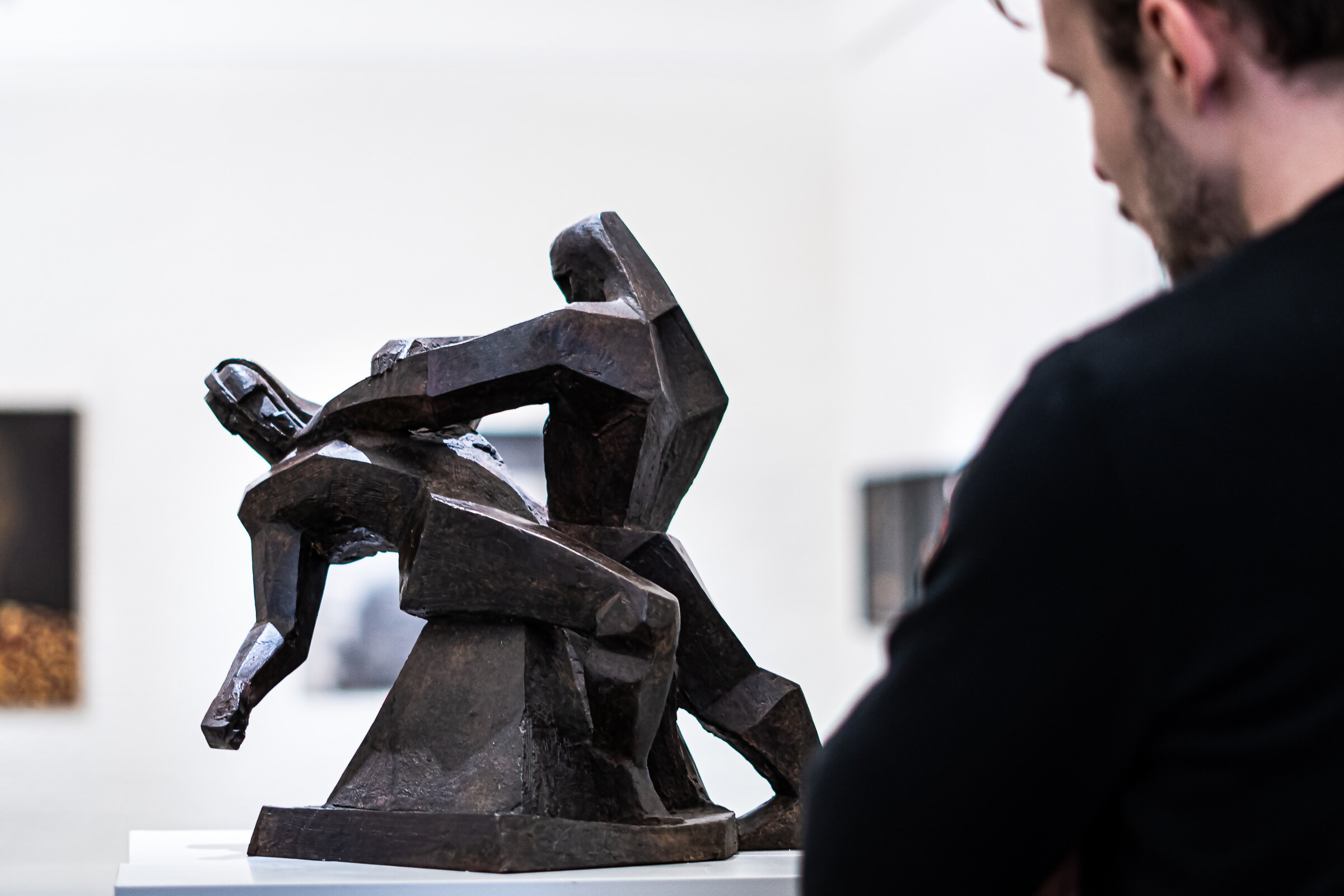
“Struggle” Bronze sculpture 46cm tall
The enormous proportions of the exhibition hall at Antwerp’s Royal Academy of Fine Arts are matched by its opulence. Fen’s sculptures weren’t particularly cumbersome in size, but his tutors weren’t talking about their physical qualities. They were talking about them ‘metaphysically’. Fen acknowledges his sky-high confidence during this time and that he wasn’t trying to aggress people, but he was not allowed to imbue the physical energy he felt into his art. Fen was touching on a cultural epoch that was now considered verboten.
The manner in which Fen’s tutors recoiled at the expression coming through his art made him dig deeper. He became further interested in the spiritual and metaphysical side of his style, looking into the Futurists, Vorticists, and Early Modernists, looking at ‘their great unapologetic expressions.’ For Fen, these men were ‘Promethean’ artists, highly avant-garde, but not in a ‘weakened progressive sense’.
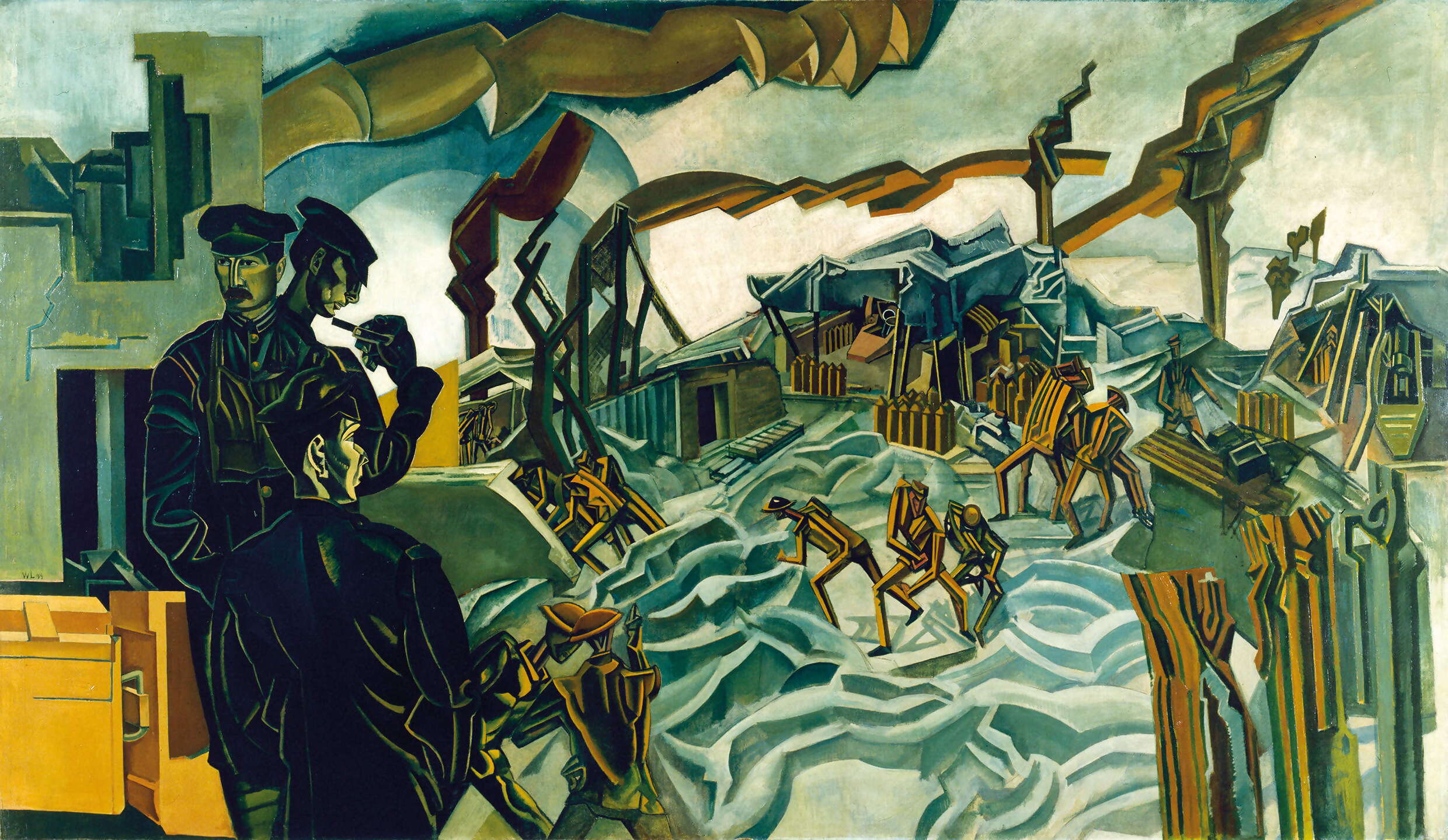
“A Battery Shelled”, 1919, by Wyndham Lewis
A notable figure amongst the early 20th century Modernists, one who founded Vorticism, was Wyndham Lewis. Men like Lewis had seen firsthand the destruction wrought by modern warfare in the First World War. Whilst in the trenches, Lewis, and other artists like him that would soon emerge, transformed into painters who were nothing like any others who had come before them. They needed to reassert Man Against Machine, and reject dehumanising practices both on the front and at home.
‘’Wyndham Lewis invigorated me, that thread of culture was something I could connect to because it was life-affirming,’ says Fen, ‘It was celebrating a real verve that felt honest, rather than a curtailed energy that we have to stick to just to get by as an artist in this day and age.’
View this post on Instagram
Fen’s work is gripping because resistance to it is difficult to put into words. It is an inanimate object that says nothing explicitly. His detractors simply don’t like it and they can’t explain why. When somebody tells you not to go into a room but will not give a reason, before admitting they’ve not been in there either, your urge to venture inside grows.
‘The current status quo of the art world today is on the assault of aesthetics,’ Fen remarks, ‘Art is carried out mostly on a metaphysical level, with subtle energy expressed through aesthetics. People are looking at these energies and getting upset but they can’t put their finger on what it exactly is. Instead, they throw words at me like ‘colonial’. How is my work colonial? I don’t even know why that word is used. Just because you’re looking at the vitality of the 1870s and 1920s and you like the unapologetic energy of it, doesn’t have anything to do with colonialism, or with being ‘too strong’ or ‘too masculine’.
Indeed, the ceilings of the Sistine Chapel should be considered by these very people to be masculine, and does the fact Michelangelo was a contemporary of Christopher Columbus mean he too was colonial? If the same life-affirming energy expressed in the Creation of Adam and the Early Modernists is that which propelled European circumnavigation of the globe and colonisation, then Fen’s opponents might have a point. It’s up to the individual to decide if this is all shadow territory never to be explored or if there might be light there too.


